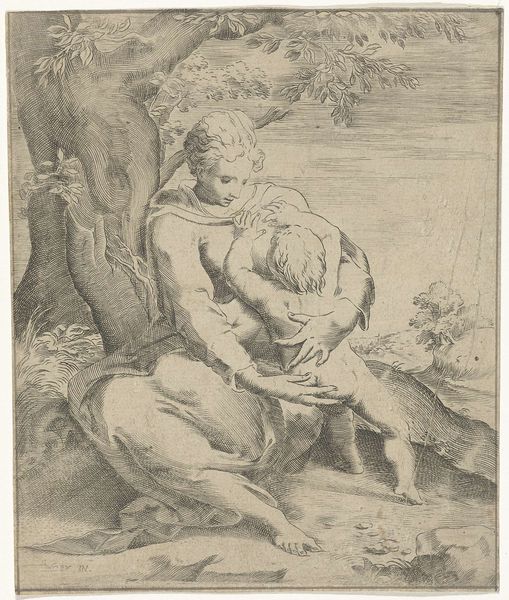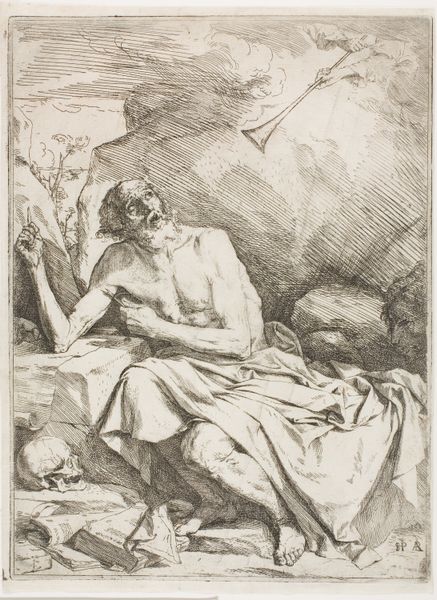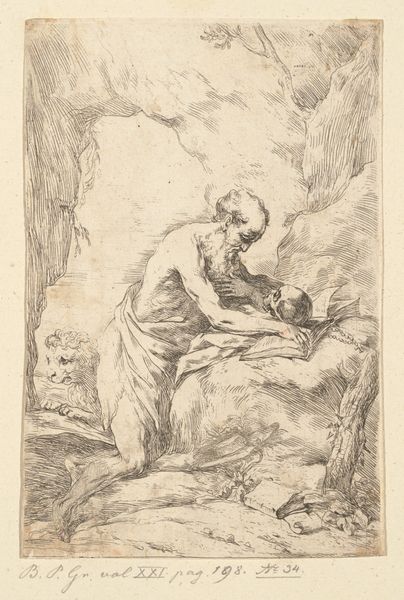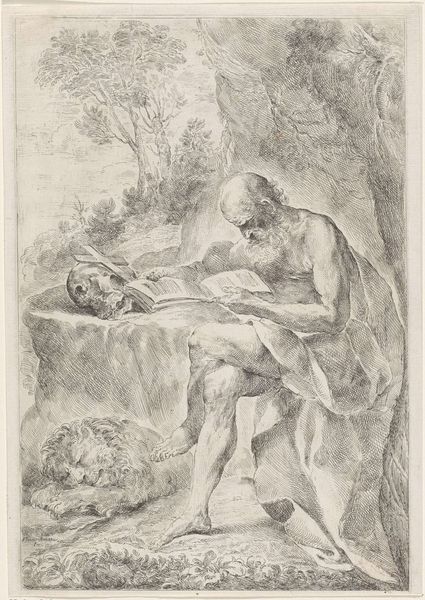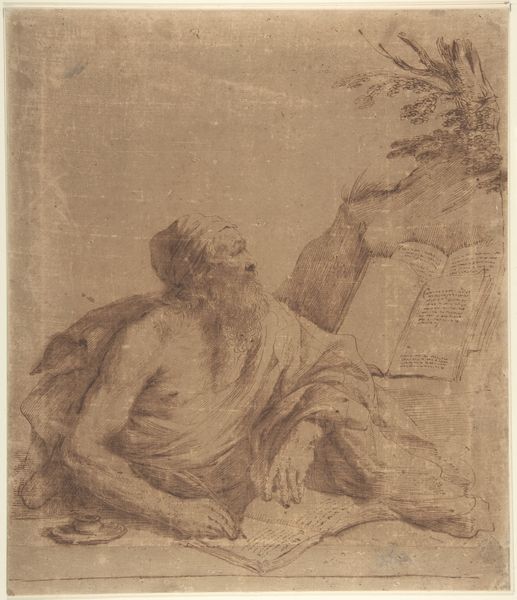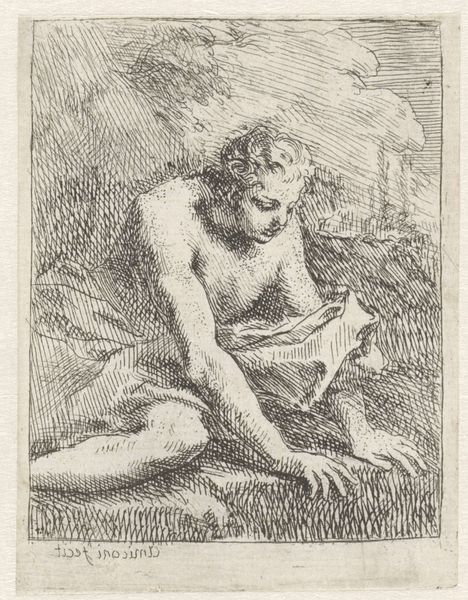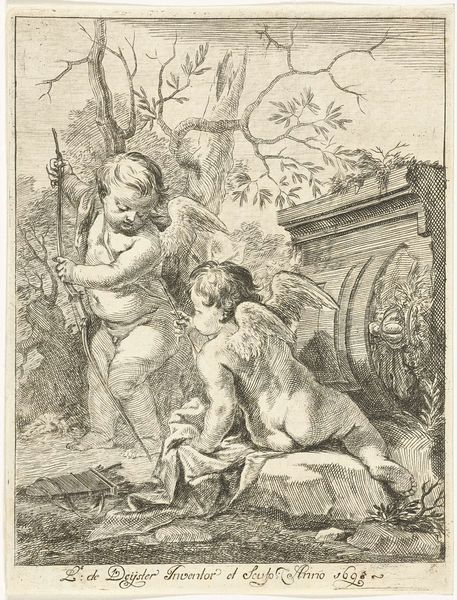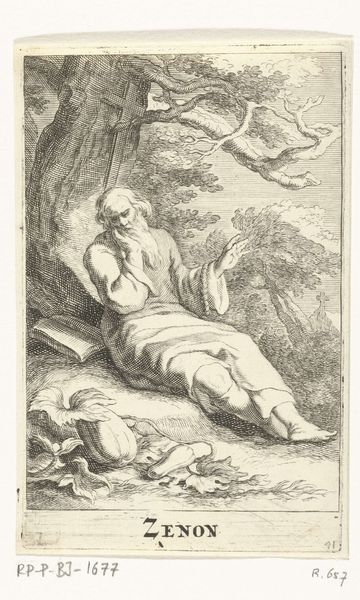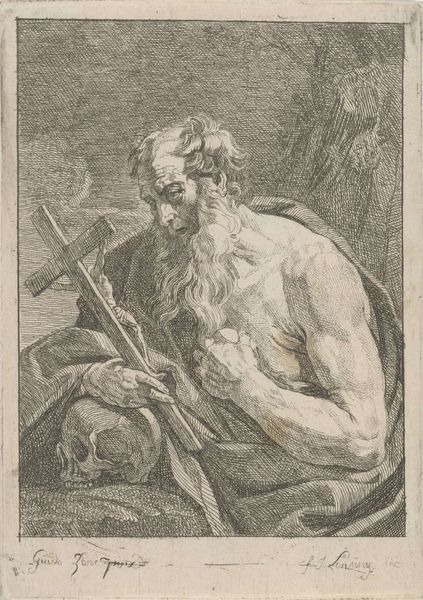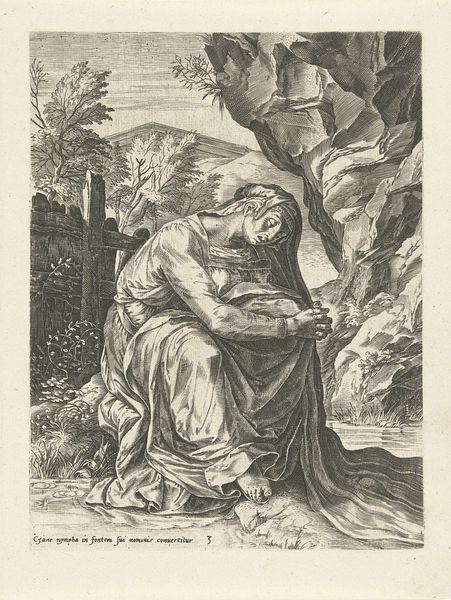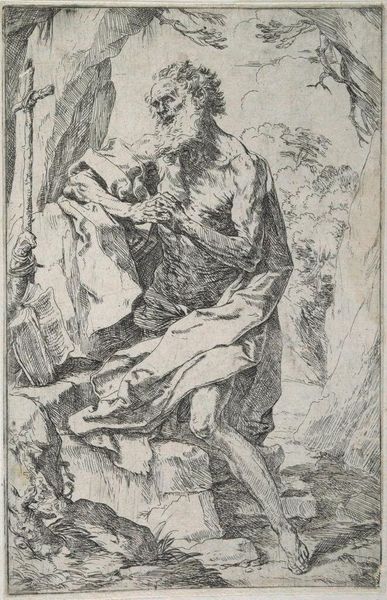
drawing, paper, ink
#
portrait
#
drawing
#
baroque
#
pencil sketch
#
paper
#
ink
Dimensions: height 416 mm, width 261 mm
Copyright: Rijks Museum: Open Domain
Curator: We're looking at "H. Hieronymus in de woestijn," or "Saint Jerome in the Wilderness," a drawing by Guercino, created sometime between 1601 and 1666. It's rendered in ink on paper and currently held in the Rijksmuseum collection. Editor: My first impression is one of ascetic longing. The upward gaze, the sparse landscape rendered in these warm sepia tones…it speaks of deep contemplation. Curator: Indeed. Let’s consider Guercino's technique. Notice the cross-hatching; how the artist uses layered lines of ink to build depth and shadow. We're not seeing finished perfection here, rather something closer to an intimate, workshop investigation of form. The readily available paper and ink underlines a certain kind of deliberate economy, I think, too, one of accessibility of the artistic practice, of the workshop culture… Editor: The halo surrounding Saint Jerome's head signifies his sainthood. Observe, too, the books beside him: attributes of the scholar. These elements connect to Jerome’s vast contribution to the Vulgate Bible. It’s powerful to consider how Guercino portrays this figure wrestling with scripture and faith amidst deprivation. This imagery touches on universal themes of spirituality and introspection that continue to resonate. Curator: I find the raw materiality compelling. It's easy to overlook, I suspect. Think about the cost of paper and the procurement of ink at this period and the social implications of artistic production more generally in Guercino's time and place... How workshop structures influenced accessibility and exchange and how such factors impacted on the final drawing itself. It makes the hagiographic nature of the symbolism all the more poignant. Editor: I'm moved by how these relatively simple lines capture such profound internal struggle, a dialogue between the divine and human vulnerabilities. It speaks to a timeless search for meaning. Curator: It's a fantastic intersection of labour and meaning that reveals aspects of both individual and universal experience. Editor: Yes, and perhaps offers us today a renewed view on both religious narratives and artistic process.
Comments
No comments
Be the first to comment and join the conversation on the ultimate creative platform.
